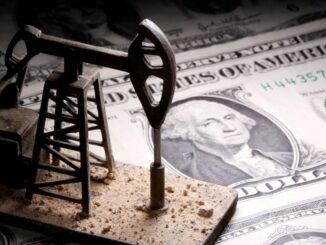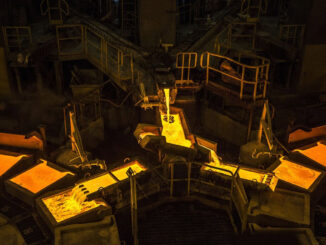
By Wolf Richter for WOLF STREET.
It goes something like this: In 2006, an investment fund managed by a division of UBS bought a 925,000-square-foot office tower, dating from the 1960s, at 135 West 50th Street in Manhattan for $332 million — just the building (the leasehold interest), not the land.
In 2006, it purchased the land (ground lease) for $279 million. In 2019, it sold the land to Safehold – the company specializes in ground leases – for $285 million, and inked a long-term ground lease with Safehold.
We assume that UBS retained the building because this was 2019 and there was an “office shortage” in Manhattan, and office rents were going to the moon, even for a drab 1960s tower or whatever. This way, in theory, UBS could draw income from the building – the office rents, on their way to the moon, would hopefully exceed the costs of the ground lease and other expenses – while it had drawn $285 million in cash out of the property.
UBS then renovated the building. Construction was finished in 2021. At the time, the building was about 40% leased, according to the Commercial Observer. According to The Real Deal, citing the recent listing, renovation costs amounted to $76 million. So now, UBS had $408 million in the building.
At about that time, the office CRE market began collapsing amid working-from-home and a massive amount of vacant office space coming on the market that no one knew what to do with. But UBS had already gotten $285 million out of the property by selling the land in 2019.
By now the building is only 35% leased, office rents aren’t going to the moon, and aren’t covering the costs of the ground lease, and the whole thing has turned into a money-suck.
UBS tried to sell the office tower, there was apparently a deal that fell through. And so UBS dumped the building by selling it via an online auction at Ten-X for $8.5 million.
What UBS got out of the building it had bought for $332 million and renovated for $76 million ($408 million in total) and the land it had bought for $279 million was: $8.5 million from the sale of the building and $285 million from the sale of the land, for total proceeds of $293.5 million — producing a massive loss on the building but a small gain on the land, for a total loss of $385 million, or a 43% loss on its investment.
But on its financial statement, the loss on the building will be a lot less, because buildings (but not land) are depreciated to zero over a certain period, such as 39 years per IRS rules for commercial buildings, which would have cut the book value of the building on UBS’s balance sheet by 44% over the 17 years that UBS owned it. If UBS depreciated the building that way, the building would have a book value of about $182 million by the time UBS sold the building for $8.5 million, generating an accounting loss of about $174 million on the building itself, and a $6 million gain on the land, for a combined accounting loss of $168.
Earlier this year, we discussed a similar ground-lease situation in Chicago where a 12-story, 50% vacant, old (“landmark”) office tower at 300 W. Adams St. sold for $4 million, for the building only. Alliance HP had bought the whole property for $51 million in 2012 and then divided it into a leasehold interest in the building and a 99-year ground lease. Alliance defaulted on the loan on the building, and lenders foreclosed on the building and sold it for $4 million. But Alliance HP retained the land, and it continued to collect rent on it.
Enjoy reading WOLF STREET and want to support it? You can donate. I appreciate it immensely. Click on the beer and iced-tea mug to find out how:
Would you like to be notified via email when WOLF STREET publishes a new article? Sign up here.
Take the Survey at https://survey.energynewsbeat.com/





